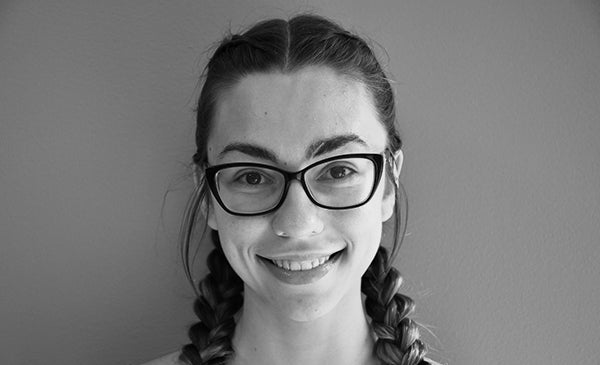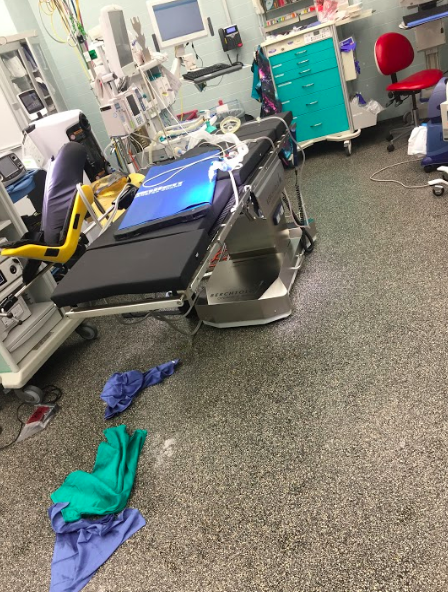Dionna Bidny
Dionna Bidny

Basic Information about Student (Small Background introduction)
Blog
The Good and Bad

I don’t usually get nervous, but on Monday of this week I was, admittedly, slightly nervous. Starting Clinical Immersion only one week before my MCAT, I was concerned for my capacity to be creative due to the particularly fried state of my brain. However, the diversity of what we excperienced in Ob-Gyn was in fact a welcome reprieve from the rote boredome of standardized testing that has been momentarily consuming the use of my neurons.
In just our first week, I have witnessed numerous clinical procedures and a number of surgeries, I have seen first hand that a uterus somewhat resembles a chicken leg, and I have felt useful by being the only one in the OR tall enough to be able to reach the joint of the overhead light to move it into position, if i jumped (bad design?)– What an adventure!
I love shadowing in Ob-Gyn for the massive variety of procedures, instruments, and techniques that play a role in patient care here. Even in a short time, our team has already experienced enough to start brainstorming ideas of where the next five weeks may lead us.
Here are a few of my personal favorite good and bad designs we compiled over the last week:
GOOD: I liked the adjustability of the surgical beds. Because Gyn surgery often needs vagianal access, being able to comfortably lay down a patient and then removing the lower part of the bed for easy access made a lot of sense.
BAD: For me, the most interesting bad design was the cords on the SCD (sequential compression device). The SCDs are placed around the legs to maintain blood flow and prevent clotting during surgery. The cords run down from the legs, which are often propped up during gyn surgery. This causes a tripping hazard.
Storyboarding the search
What a perfect time for storyboarding processes we witness in the hospital to be introduced to us– who knew this handy tool could help me assess the messy process of locating the portable ultrasound in the Obstetrics ER.
Let me give you a little backstory:
The OBER is armed with two ultrasounds: a large one equipped with a vaginal probe that lives in its own lovely and spacious room, and a second smaller, portable, and very high demand ultrasound (US) that is possibly the busiest employee of the entire department. The portable US is used for any quick standard US procedure in the ER (when the vaginal probe is not needed).
Mid Tuesday morning, my attending and I left the staffroom to go in search of this very device, starting with exam room 1, its typical parking spot.
It wasn’t there.
After asking the nurses if they had any idea in regards to its location (they didn’t), we returned to the staffroom to discover that the portable US was in use. As we awaited its availability, another team of students entered requesting to use it as well, making us aware that this device truly embodied the popularity level we all aspired to in life. We had to explain that it was in use, we would use it next, and only then would it be available.
When the initial team finally finished, my attending and I returned to exam room 1 expecting it to be patiently waiting for us. But, as these things go, it was not.
Ultimately, we learned from someone we bumped into in the hall that it was directly placed into the exam room that was housing our patient.
Realizing the convoluted mess that was involved in locating the portable ultrasound, I quickly listed out the steps we took from the moment we decided we needed the ultrasound to finally obtaining the ultrasound. Storyboarding this process truly gave me a clear picture of the problem points, and helped me brainstorm how a possible tracking system or digital sign-up system for the usage of the device could be immensely helpful.
Needs statement
Developing a needs statement was more convoluted than expected.
But then again, I suppose that’s how life generally works.
In the end, we had far more than 3 iterations of our statement, with many still to likely come in the future. Also, progress was not linear; some later versions completely failed at improving previous ones. To display our progress, we selected three iterations that seemed to best exemplify the development of our thought process.
We decided to tackle a problem we’ve continuously come back to over the course of the internship thus far: surgical drape sizing. With nearly every surgery we’ve watched, the intended incision did not perfectly fit the standard opening of the surgical drape. When the surgeon cuts the drape opening to fit the incision area and mitigate this, the adhesive properties and cohesiveness of the drape opening is compromised, thus risking the loss of tools between the patient and the drape through the opening.
The hardest part of this process was truly to pick one need, as there are so many we want to tackle! But, I suppose it’s better to have identified too many rather than too few.
Iteration 1:
A way to address draping in patients during surgery that provides ideal surgical area
Problems with this needs statement :
What is wrong with the drapes?
What defines ideal surgical area?
What is a more specific outcome of the problem?
Iteration 2:
A way to address the need to cut surgical drapes to better expose incision area for patients in surgery that does not minimize the adhesive property of the drape against the patient’s skin in cutting the drape.
Problems with this need statement:
What defines your patient population?
What kind of surgeries?
What are other implications of cutting the drape?
Iteration 3:
A way to minimize the loss of time and adhesive properties that result from the cutting of standard-sized surgical drapes to fit an incision area in patients of different stature during various gynecological surgical procedures.
blog
My current goal is to re-learn how circuits do things and what arduino is so we can really start prototyping– because I hate admitting I spent five minutes troubleshooting a circuit when the only problem was a backwards LED.
With no hard feelings toward the surgical drape idea in the previous post, the decision to move onto something else as our final project was easy.
Brainstorming around our new idea has proven difficult.
But such is the engineering life.
A quick flashback before I dive into our new approach: Around week 2 of the program, we were notified that our attending would be seeing a deaf pregnant patient, who would like a better way to interact with her baby’s heartbeat. We developed a quick app prototype that allowed the patient to feel a vibration at approximately the rate of her baby’s heartbeat (Our attending used the doppler to estimate the heartbeat and we input the pace into the app).
The patient was delighted, and we had a chance to interview her about her prenatal experience as a deaf individual, which was incredibly enlightening.
If anything exemplified user-centered design, it was this. When an often-overlooked population is identified, something as simple as altering existing designs for that population’s needs can open up a whole avenue of straightforward but impactful innovation.
This got us thinking: How can we further improve deaf pregnant patients’ use of the fetal doppler? How could they interact with it in real time? Could we go above and beyond just a vibrational output, and create something even hearing patients would benefit from?
With that, we settled on our new needs statement:
‘A method to improve interaction between fetus and deaf pregnant individuals that increases maternal involvement in the prenatal experience.’
I’m genuinely very delighted about this new problem to tackle. While our brainstorming and basic prototyping sessions have been far from perfect, we’re all vested in it–and it was incredible to see a hint of what it’s like to directly impact an individual with something we’ve created.
yay
As you may have guessed by the title, this week was very fulfilling in terms of innovation and collaboration outside of the clinic.
Being the starry-eyed and enthusiastic budding engineers that we are, my team reached out to a number of individuals that work in disability resources to discuss our idea with them. It has been amazing how positive people have been toward our project, and our Monday meeting at the Innovation Center this week has inspired us to think even bigger than we had planned. I am beyond excited to share our final project with the other teams and the people we’ve connected with through this program.
Meanwhile, it’s time to sort through our ideas, put them on paper in an organized write-up, and remember how to use solidworks.
Though this experience may have made me second guess my career choices (in the best possible way), here’s to a successful CIP finale.